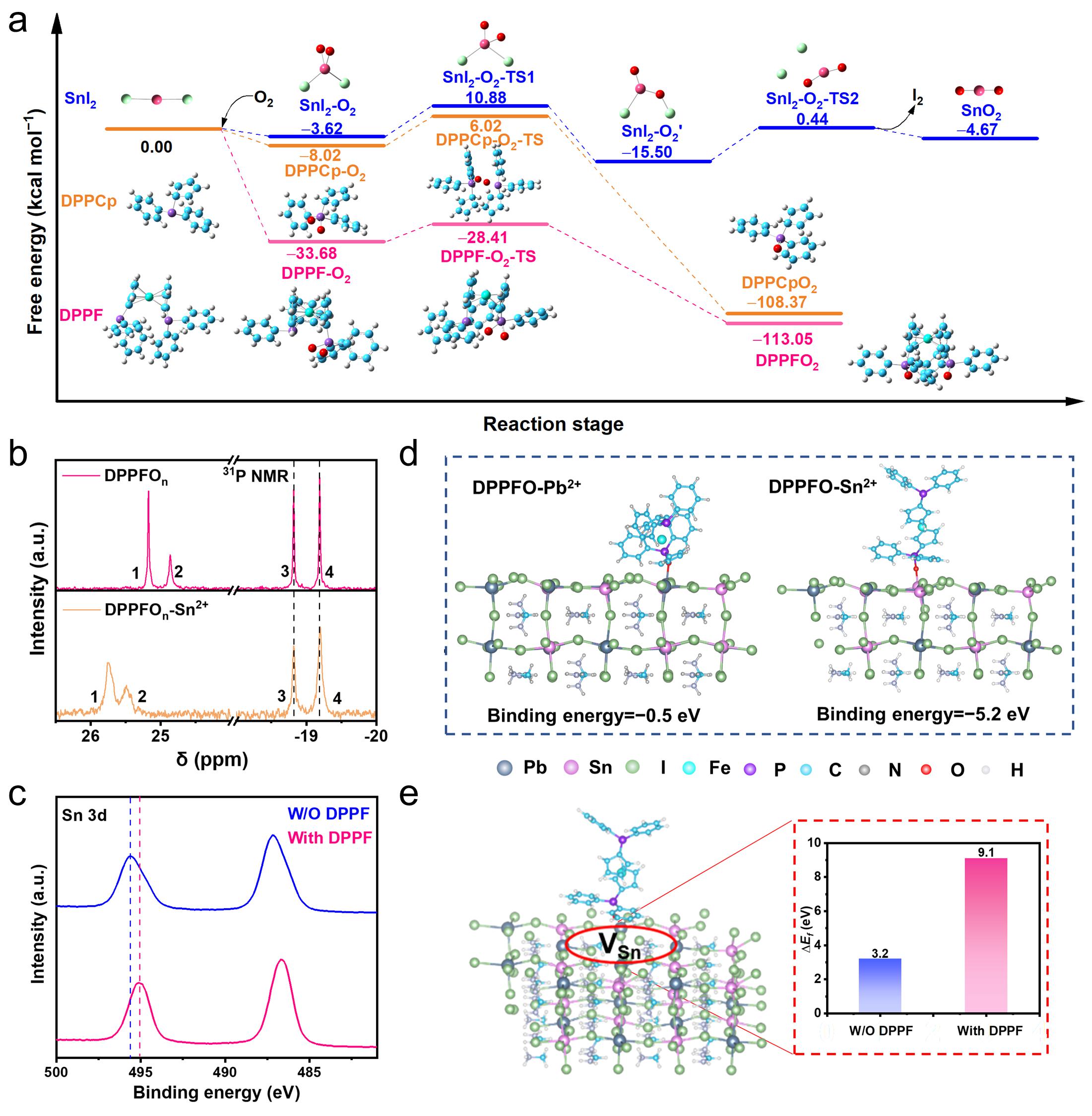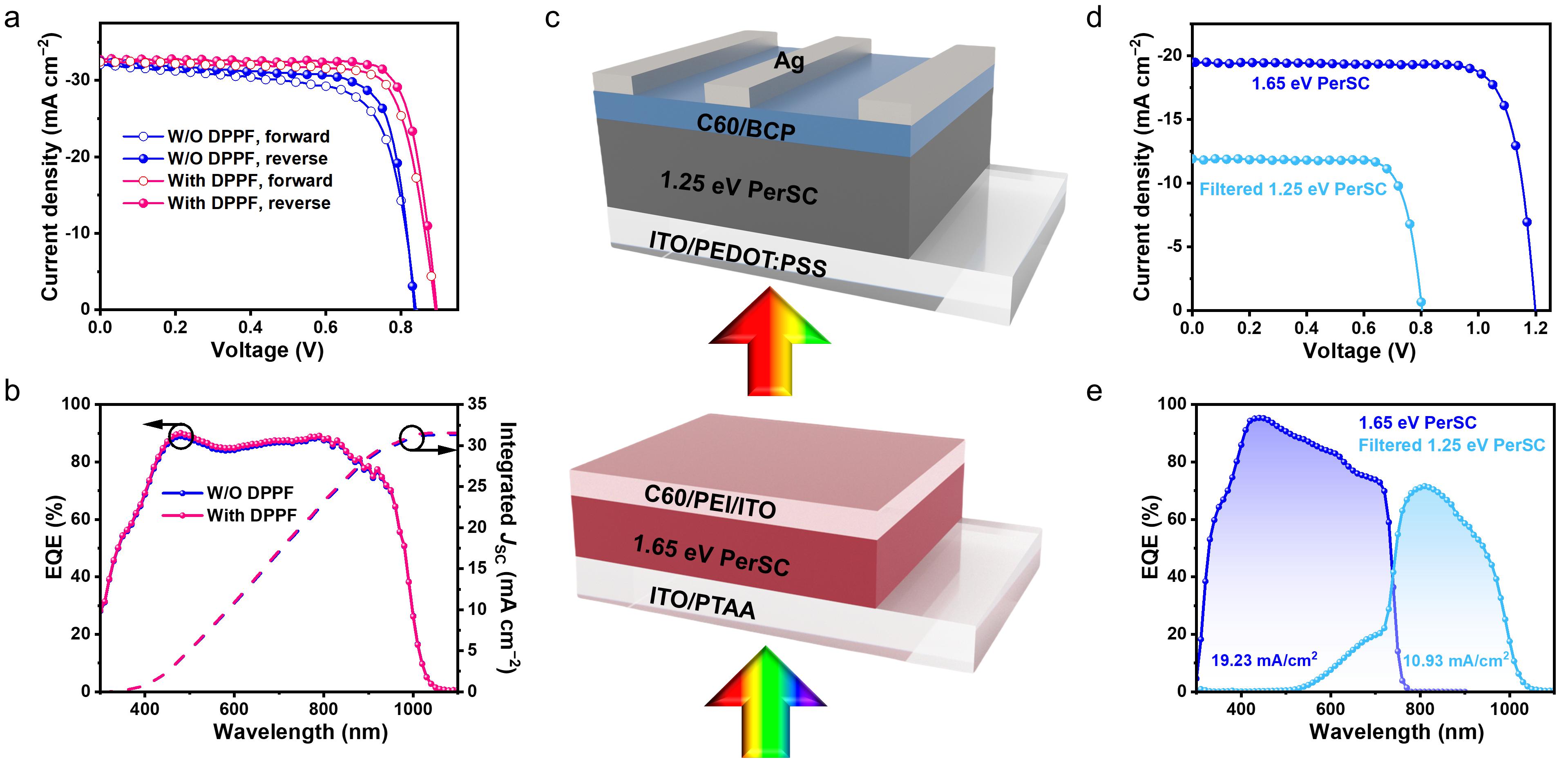Narrow-bandgap tin-lead (Sn-Pb) perovskite solar cells (PerSCs) hold the potential to achieve higher theoretical limit efficiencies, and their ideal bandgap characteristics make them ideal candidates for tandem perovskite solar cells. However, the unique electronic structure and susceptibility to oxidation of divalent tin ions greatly constrain the performance of Sn-Pb PerSCs. Reducing the generation of Sn vacancies in perovskite films and suppressing p-type self-doping and non-radiative recombination phenomena are crucial for enhancing the efficiency and stability of Sn-Pb PerSCs.

Figure 1: Regulation of oxidation energy barriers and defect passivation mechanisms in narrow-bandgap perovskites
This study reports a redox energy barrier managing strategy to construct high-quality Sn-Pb perovskite, where 1,1'-bis(diphenylphosphino)ferrocene (DPPF) with a lower reaction energy barrier can protect Sn2+ from oxidation, where the oxidized products of DPPF tend to anchor with the Sn vacancies, effectively depressing the trap densities of perovskite. The optimized inverted PerSC reached an impressive power conversion efficiency (PCE) of 23.5% (23.38% certified) accompanied by a high open-circuit voltage of 0.89 V and a low energy loss of 0.36 eV. When combined with the semi-transparent wide-bandgap PerSC, the four-terminal all-perovskite tandem solar cells achieved an outstanding PCE of 26.4%.

Figure 2: Device performance of perovskite single-junction and tandem solar cells
This study titled "Redox Energy Barrier Management for Efficient Tin-Lead Perovskite Solar Cells," was published in National Science Review. The first authors are He Zhangwei, a Ph.D. graduate from the Beijing Advanced Innovation Center for Soft Matter Science and Engineering (BAIC-SM) at Beijing University of Chemical Technology (BUCT), and Feng Wang from Linköping University. The corresponding authors are Runnan Yu from the School of Materials Science and Engineering at BUCT, Zhan'ao Tan from BAIC-SM, and Feng Gao from Linköping University. This work was financially supported by the National Natural Science Foundation of China and the Fundamental Research Funds for the Central Universities.
Article information: Zhangwei He, Feng Wang, Yiman Dong, Yuling Zhang, Runnan Yu, Feng Gao, and Zhan'ao Tan, Redox Energy Barrier Management for Efficient Tin-Lead Perovskite Solar Cells. 2025, nwaf097.
Original article link: https://doi.org/10.1093/nsr/nwaf097